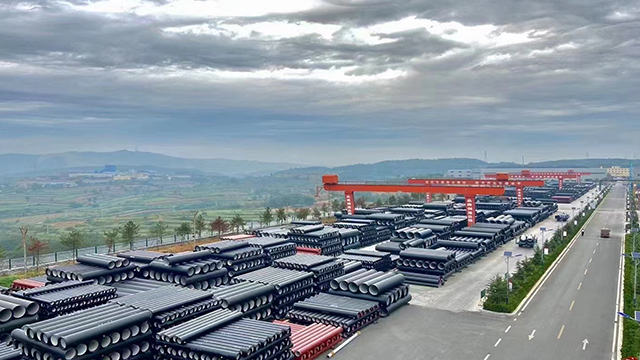Cast iron pipe, a widely used pipeline material in municipal, industrial, and construction fields, the selection of its diameter specifications is crucial for ensuring fluid transportation efficiency, system stability, and cost control. This article will detail the diameter range of cast iron pipes, analyze the application fields suitable for different diameters, and provide considerations and specific data cases when choosing the diameter of cast iron pipes.
Cast iron pipes come in a variety of diameter specifications to meet different fluid transportation needs. Generally, the nominal diameter (DN) of cast iron pipes ranges from 40 millimeters to 1000 millimeters. Common specifications include DN40, DN50, DN80, DN100, DN150, DN200, DN250, DN300, DN400, DN500, DN600, etc. The diameters of cast iron pipes, whether it is the outside diameter or the inside diameter, play a vital role in determining their application scenarios. The cast iron pipe outside diameter and cast iron pipe inside diameter are important parameters for different engineering requirements.
- Building Water Supply and Drainage Systems: Suitable for the cold and hot water supply and drainage systems of small buildings such as residential houses and office buildings.
- Floor Heating Systems: Due to their moderate size, they are easy to install and maintain, making them suitable for floor heating pipeline systems.
- Industrial Fields: Can be used to transport small - flow chemicals, oil, natural gas, and other substances.
- Urban Water Supply Systems: Used as water transmission pipelines in urban water supply systems to meet medium - flow demands.
- Building Drainage Systems: Including rainwater and sewage discharge systems, suitable for multi - story buildings or commercial complexes.
- Industrial Transportation Pipelines: In industries such as chemical, pharmaceutical, and paper - making, used to transport fluid media with medium flow rates.
- Urban Water Supply and Drainage Systems: Used in large - scale urban water supply and drainage systems to handle larger water flows.
- Farmland Irrigation Systems: Stably transport water sources to farmland to meet the irrigation needs of crops.
- Industrial Fields: In fields such as oil, natural gas, and chemicals, used for high - pressure and large - flow fluid transportation.
- Special Environments: Such as crossing rivers, mountains, and heavy - load roads, they can withstand high pressure and large flows.
The larger the diameter of the cast iron pipe, the stronger its load - bearing capacity. The appropriate pipe diameter needs to be determined according to the actual use load.
The flow rate directly determines the load - bearing capacity of the cast iron pipe. To meet specific flow requirements, the appropriate pipe diameter needs to be selected.
Larger - diameter pipes generally have a longer service life because a larger diameter can slow down the corrosion process. The diameter of cast iron pipe has a significant impact on its lifespan.
For media with strong corrosiveness, using large - diameter pipes can slow down the corrosion rate.
The larger the diameter of the cast iron pipe, the higher the material cost and processing cost. It is necessary to comprehensively consider the project budget and cost - effectiveness.
Take a certain urban water supply system as an example. A 1000 - meter - long water supply pipeline needs to be laid in this system. After analysis, the flow requirement of this system is 100 cubic meters per hour, and the possibility of future flow growth needs to be considered. Based on these conditions, engineers selected a DN200 cast iron pipe as the preferred solution. This pipe can meet the load - bearing capacity requirements of the system, provide sufficient flow, and extend the service life. At the same time, considering its long service life and low maintenance cost, the overall cost - effectiveness is relatively high. The 4 cast iron pipe outside diameter of DN200 pipe also meets the relevant connection and installation requirements in this project.
Selecting the appropriate diameter of cast iron pipe is the key to ensuring the stability of the fluid transportation system and cost control. During the selection process, factors such as load - bearing capacity, pipeline flow, service life, corrosion resistance, and project cost need to be comprehensively considered. At the same time, understanding the application fields of cast iron pipes with different diameter specifications also helps to make more informed choices. Through reasonable analysis and calculation, the most suitable diameter specification of cast iron pipe for project requirements can be determined.
